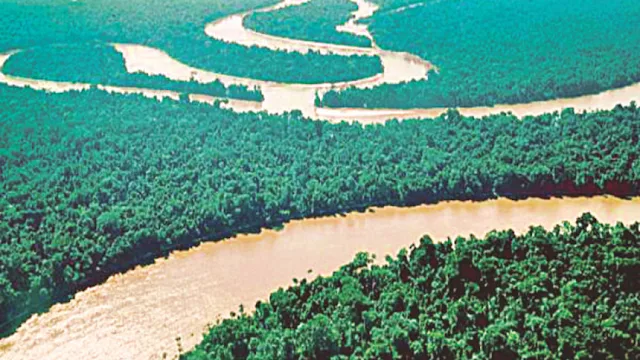Viswamitra sage addressing Beas and Satluj rivers: You move like chariots to the sea, through the power of Indira. You are full of water and wish to unite with each other.
The rivers : we, who are full of water, move along the path the gods have made for us.
--The Rigveda
Rivers flowing along their natural paths meet at confluence sites which are revered in many cultures, particularly in India where these are regular sites for religious and cultural fairs. However now India is well on its way to engineering artificial meeting points of rivers —by recent accounts as many as 29 such points involving 37 rivers. This is supposed to be achieved under a National River Links Project which has been off and on for a long time in its various versions. Under the previous UPA regime this was pushed back largely on environmental and social grounds, but has been revived with much enthusiasm under the post-2014 NDA ruling regime.
In the recent official publicity campaign launched at the time of the foundation stone laying ceremony of one of the first such projects it has been stated that this project has been taken up under the wider National Perspective Plan (NPP) which has been prepared to transfer water from water-surplus basins to water-deficit basins for tackling the problem of water scarcity. The NPP comprises two components—firstly the Himalayan Rivers Development and Secondly the Peninsular River Development. 16 projects are planned under the Peninsular River Development component alone.
The cost of the scheme was stated by the union water resources minister to be around Rs. 11 lakh crore (about 160 billion US dollars) in 2016 and would be closer now to around one and a half times of this. However the ecological and social costs may easily outstrip the economic ones.
Rivers have found their current paths on the basis of flows over thousands of years, all the time creating a balance with the other changes taking place in nature. To force different and artificial, human designated paths on them within the space of a few years would involve forcing simply too many changes in environment within a very narrow time span, without really understanding all the possible adverse impacts on environment and various forms of life, including human beings. When this is done more or less simultaneously for 37 rivers this may amount to creating a massive mess that is much easier to enter than to withdraw from. To attempt this at a time when weather extremes and worsening disasters are anyway creating very uncertain conditions is all the more risky.
Different forms of life flourish in different rivers, related also to differences in water quality and different kinds of vegetation and minerals which the river absorbs along its flow. How the various life-forms from fish to water birds are affected when waters of two rivers are merged artificially cannot be predicted precisely even by decades of careful research, but the authorities are plunging ahead nevertheless.
Water-transfer paths are drawn up much more easily on paper than implemented on land—on real villages and forests, plateaus and hills. The costs in terms of millions of trees felled and hundreds of thousands of people displaced may turn out to be simply too high. In addition the economic and energy costs of lifting water over highlands may be enormous.
A recently discussed case has been that of the Par-Tapi-Narmada link which threatens to displace several tribal communities in western parts of the country. As the project started gathering pace around the year 2022, there were so many protests led by tribal communities that the government had to suspend the project for the time being. Another initial project Ken-Betwa has also faced fierce criticism related to a host of factors.
These experiences with initial sub-projects are likely to be repeated in most of the nearly 29 such sub- projects of the National River-Links Project. These early warnings must be heeded to reconsider the entire massive project which is likely to involve unbearable ecological, social and economic costs.
---
The writer is Honorary Convener, Campaign to Save Earth Now. His recent books include "Protecting Earth for Children", "A Day in 2071", "Man over Machine" and "Planet in Peril". He wrote the chapter on India for the most detailed study on "Social and Ecological Costs of Large Dams", edited by Edward Goldsmith et al

Comments